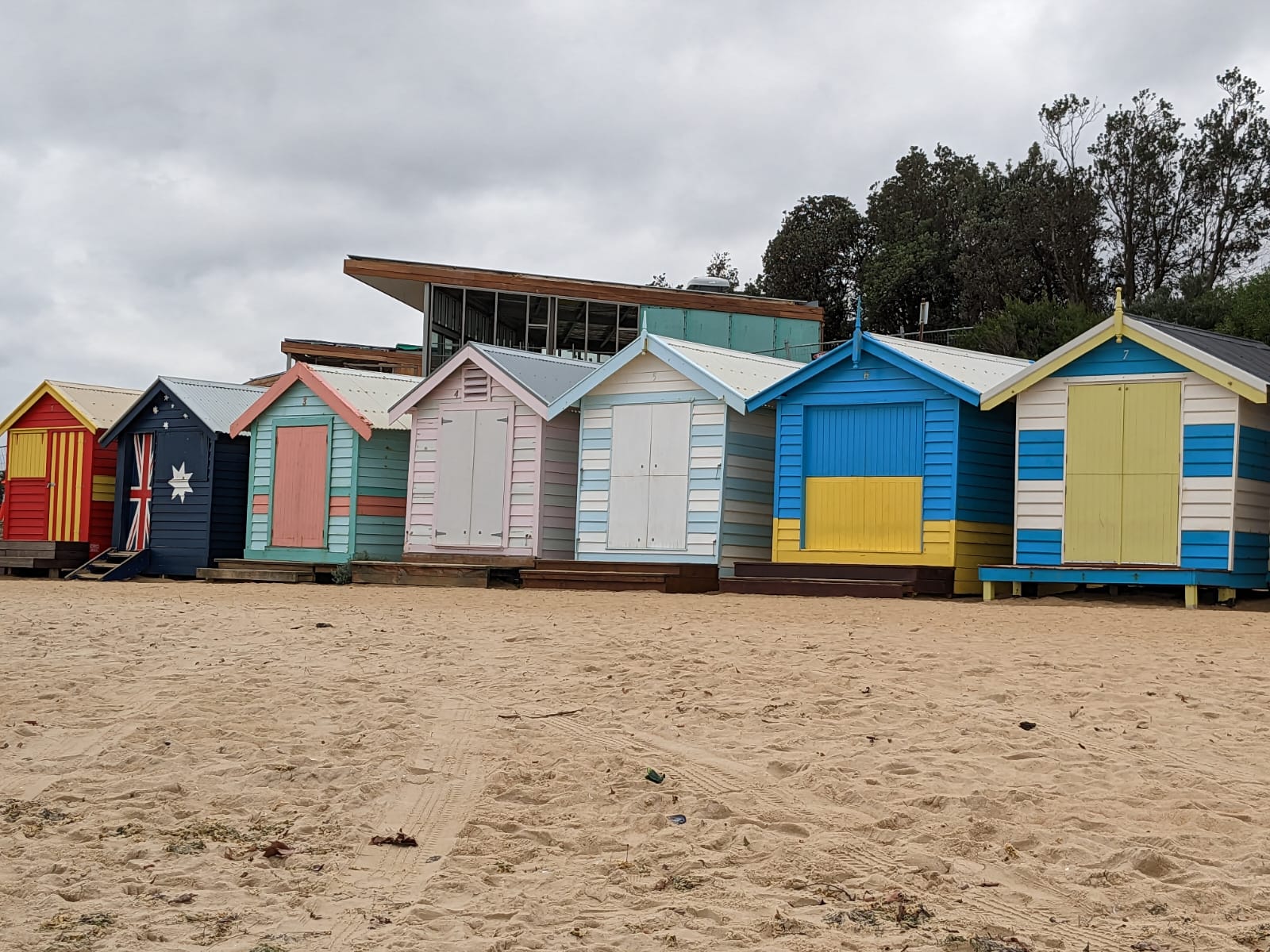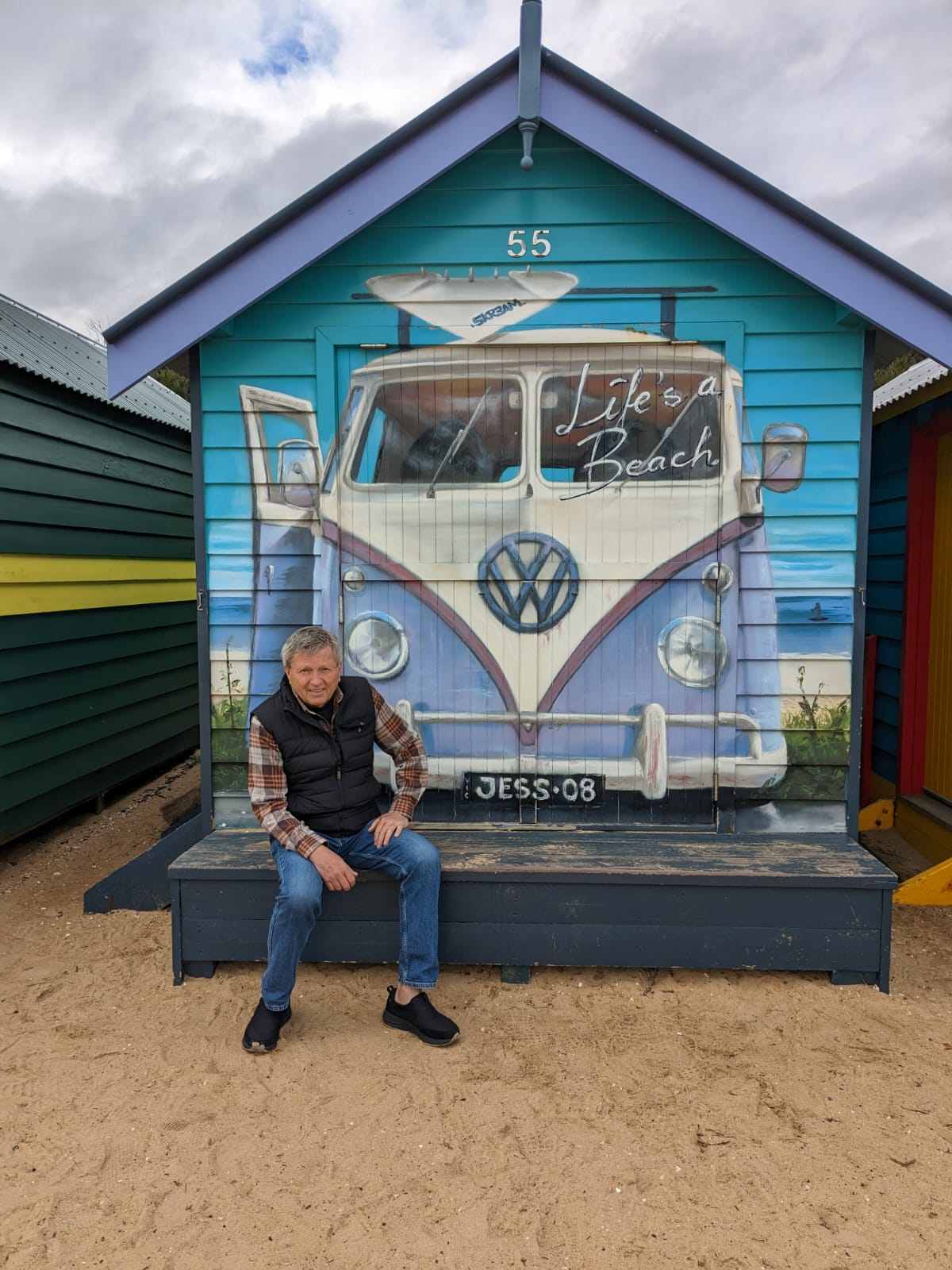MELBOURNE
Though we've been here a couple of times in the past, it's been a while ... and there is so much to do! Kris, as president of the Santa Rosa Rotary Club will be there to attend the Rotary International Convention along with her brother Peter and incoming president Ann -- so we're adding some vacation time to the trip---and we had a great time!
We managed to dine out quite a few times, hit the Melbourne Zoo and Phillips Island to watch the penguin parade. We also visited the National Gallery, the Melbourne Art Gallery, and a number of other local areas - the street art is everywhere and the architecture of the city is amazing!
The Yarra river walk was always busy with dozens of restaurants and pubs. The nightlife is very reminiscent of London....
.jpg)

The private beach boxes on South Melbourne Beach are only storage and changing rooms for the owners (no toilet or shower) -- and they go for up to $350,000au when they rarely are sold....

History of Melbourne
Indigenous history: The area where Melbourne now stands has been occupied by Indigenous Australians for tens of thousands of years, with the Wurundjeri people being the traditional owners of the land
European settlement: The city of Melbourne was founded in 1835 by John Batman and John Pascoe Fawkner, who arrived separately from Tasmania and established competing settlements on the banks of the Yarra River. The area was initially known as Batmania, but the name was changed to Melbourne in 1837.
Gold rush: In 1851, gold was discovered in Victoria, which led to a massive influx of immigrants and a boom in the economy. Melbourne became the financial and commercial center of the colony, and many of the city's grand buildings and infrastructure were built during this period.
Federation and beyond: Melbourne played an important role in the federation of Australia in 1901, and the city continued to grow and prosper throughout the 20th century. It was heavily bombed during World War II, and suffered social unrest in the 1970s, but has since become one of Australia's most livable and culturally rich cities.
Today, Melbourne is known for its arts and cultural scene, its thriving food and coffee culture, and its sporting events, including the Australian Open tennis tournament and the Melbourne Cup horse race.
.gif)
